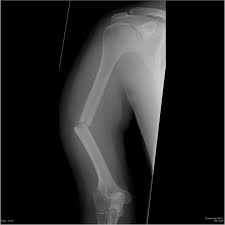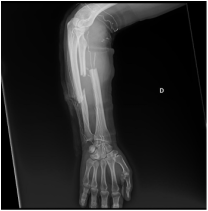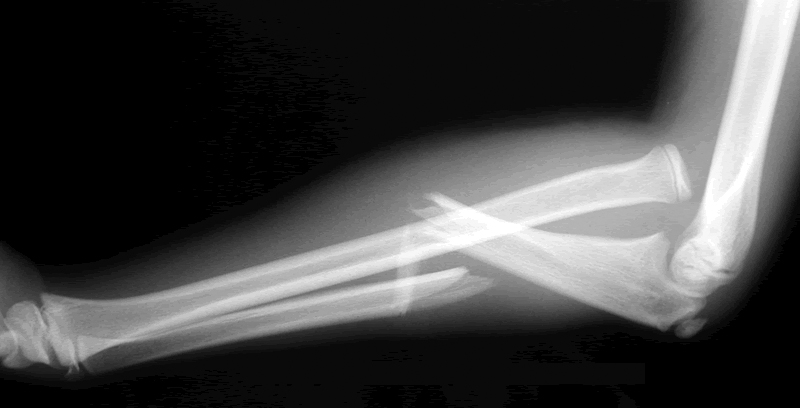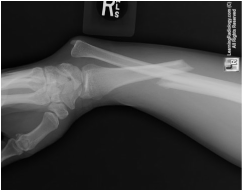Assessment and management of upper limb long bone fractures
by James Donaldson
Humeral shaft fracture
|
History:
Age – bimodal age distribution: young high energy injury or elderly osteoporotic Occupation and handedness – useful for deciding treatment, rehab protocol, compliance Time/date of injury Past medical/surgical history – including malignancies past and present Medication/drugs and allergies Last ate/drank (for timing of emergency surgery if needed) Radiographs:
|
|
Symptoms and Signs
|
Discuss with senior urgently if open or neurovascular injury |
|
Initial Treatment
|
- <20 degrees anterior angulation - <3cm shortening |
|
Definitive Treatment
|
- Vascular compromise - Brachial plexus injury - Ipsilateral forearm # - Bilateral humeral #s - Pathological # - Polytrauma - New radial nerve palsy after manipulation |
|
Radial nerve palsy
|
|
|
Complications
|
|
Forearm fractures
|
Symptoms and Signs
|
- an open fracture - a neurovascular injury (unusual) |
|
Initial Treatment
|
|
|
Fixation
|
|
|
Complications
|
|




